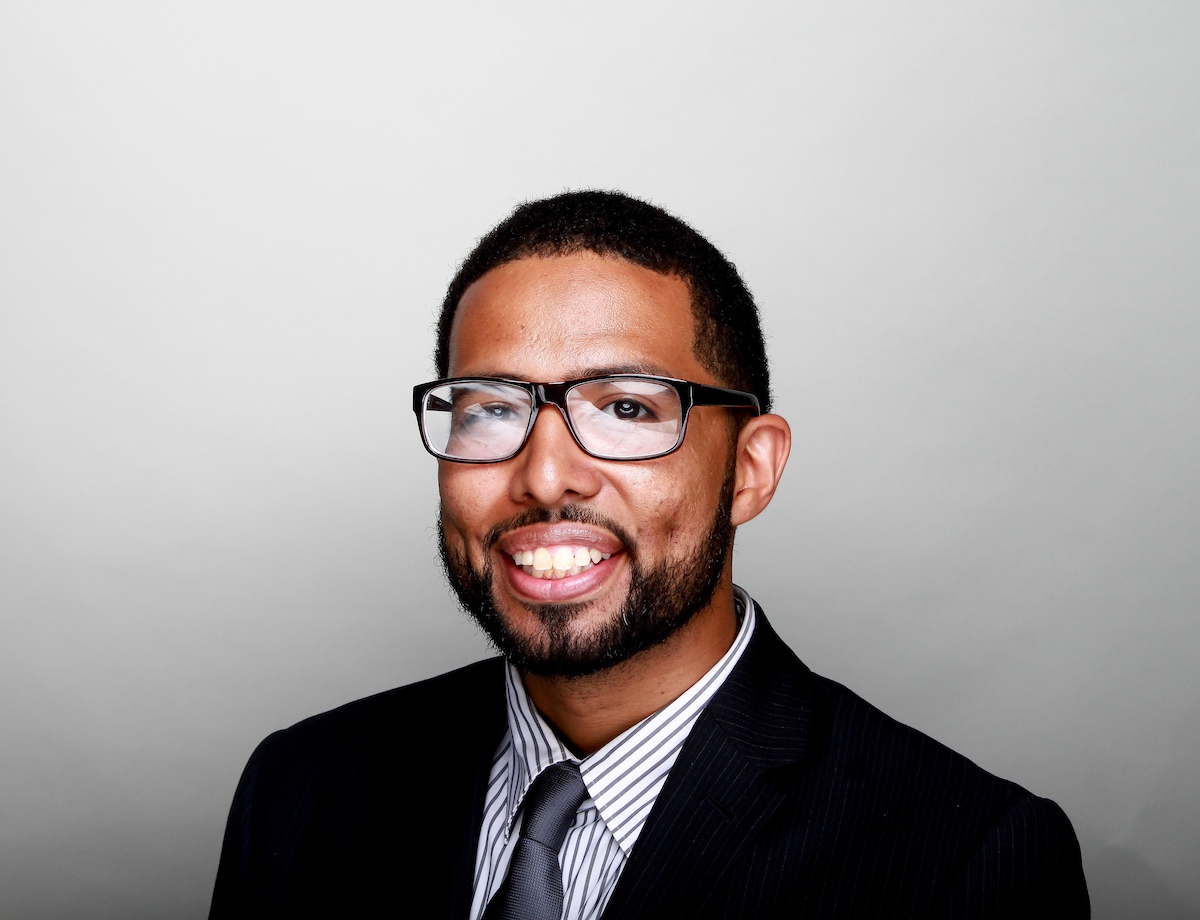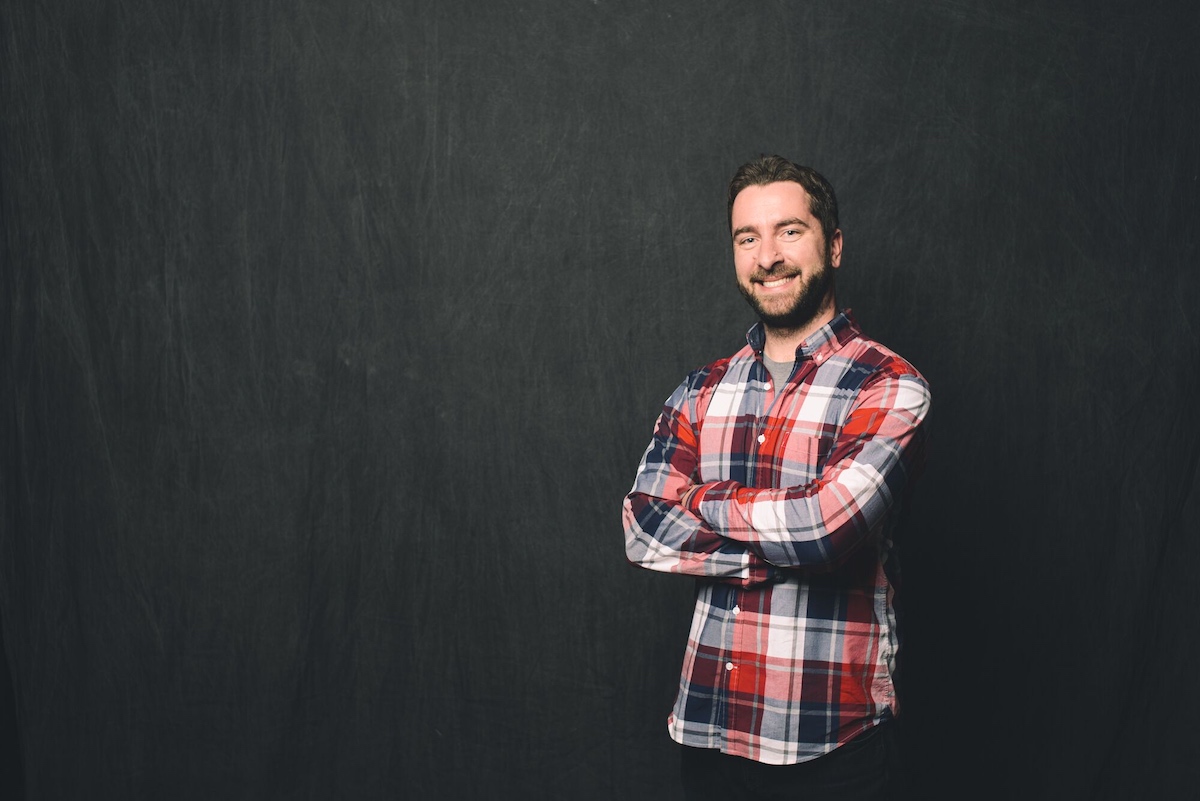As a high school student, Think Company design lead Drew Christiano was not captivated by formal education. He knew that after he graduated in 2001, he would be done. But in his design career that has spanned more than 20 years, he’s never stopped learning.
Christiano already spent much of his free time researching design online by the time he left high school, but at the the time there were not many opportunities for prospective designers hoping to learn more about their craft. To earn income, he did freelance design work for friends and held blue collar jobs, including shift management at a pizza parlor and general contracting, where he assembled bathrooms.
Searching for a way into the industry, Christiano explored for-profit education opportunities, many of which, he told Technical.ly, he now realizes are scams. At the time, he thought a certificate program would give him knowledge he needed to land a design role. Eventually, he found a job listing for a web and graphic designer position at Apple Vacations in Newtown Square. Using his freelance portfolio of work, he got the job and immediately discontinued the degree program he was in after he realized he could do the work without it.
Earlier in Christiano’s career, he was more focused on the artistic merits of his work and viability as a creative professional. He said the skill sets of designers were a bit more abstract before businesses started to understand the value of design. Having humility is a quality that Christiano believes can tremendously benefit designers: As design has shifted into more of a business, he had to learn how to hone his artistic abilities while collaborating with a business’ goals in mind.
“I spent the first 10 years of my career being frustrated because every good idea I thought I had was never executed the way I thought it should be done,” he said. “But we don’t exist in a vacuum. You’re not a supreme arbiter of what the right way of doing something is. I was not very good at doing that. It was only in the last three or four years that I reframed my mindset about the factors outside of my control.”
Since getting this first design job at the age of 22, Christiano said each role he’s taken since then has been a new opportunity to further his career. He started out as a graphic designer before pivoting into web design and later UX design. Studying HTMLGoodies.com and DynamicDrive.com and practicing his HTML skills and CSS coding in his free time helped him sharpen his skills.
Now, as a design lead at Think Company, where he landed in 2o15, Christiano works to make sure designers and developers have what they need to succeed in terms of design strategy and collaboration with clients. Working with a team of senior designers, he said, he appreciates the degree of autonomy they have in executing tasks and enjoys being a sounding board for them.
Christiano’s current digital design tech stack features these tools:
- Sketch — App used for designing user interfaces
- Abstract — A version control app used to get feedback from client stakeholders and deliver designs to developers for implementation
- InVision — An online prototyping and collaboration tool for creating simple prototypes for desktop and mobile; Christiano uses it to share concepts with clients and demonstrate user flows
- Miro — An online collaboration and whiteboarding tool; Christiano specifically uses it for brainstorming with teammates and clients using virtual sticky notes and exploring architecture for content hierarchy and user flows
- Sublime Text — A lightweight code editor “for the odd occasion where I still need to write HTML/CSS”
- Jira — Task management and tracking software; Christiano uses this more now than he did previously in his career. “Our teams use this to understand the scope and requirements for the work they’re doing, and where I work with product owners, Scrum masters, developers and project managers to prioritize work-to-be-done,” he said.
- Confluence — A companion app to Jira, Christiano uses this to keep project documentation like decision logs, feature requirements, and design and development processes
- Slack — App used for communicating with team members and client stakeholders
Think Company often works on projects for medical or pharmaceutical companies. Working with project managers to understand what each week will be like and connecting with client stakeholders is a big part of his job. At this point of his career, he works more as a liaison than a designer in the traditional sense and steps in if his team is overwhelmed.
Being a part of the online design community connected by blogs and forums has helped Christiano stay abreast of current developments in design. During the first decade or so of his career, he was highly ambitious and kept his finger on the pulse of design. In the last few years, his priorities shifted as he got married and started a family. Christiano credits the colleagues on his design teams for keeping him in the loop of new trends.
Christiano said that collaboration is a more significant part of the design process than when he first started as a web designer. For the first three-quarters of his career, he said, companies did not fully understand the work that a designer did. His work in web design eventually evolved to what is now the user experience umbrella.
“It was teams of one,” he said. “I had a few jobs like that. Now, it’s like everybody is on a team and there are other complementary roles that support what you do. You can specialize now. Organizations looking for design recognize need of that specialization.”
Today, Christiano enjoys being able to work at at a design company that he said is run by great people and has a great reputation — something he’s never said about any of his other jobs. Orchestrating the work of his design team has presented a new challenge that he enjoys exploring more each day.
Michael Butler is a 2020-2022 corps member for Report for America, an initiative of The Groundtruth Project that pairs young journalists with local newsrooms. This position is supported by the Lenfest Institute for Journalism.
This is How I Got Here, a series where we chart the career journeys of technologists. Want to tell your story? Get in touch.
Before you go...
Please consider supporting Technical.ly to keep our independent journalism strong. Unlike most business-focused media outlets, we don’t have a paywall. Instead, we count on your personal and organizational support.
Join our growing Slack community
Join 5,000 tech professionals and entrepreneurs in our community Slack today!

Tech Hubs’ new $210M funding leaves Baltimore and Philly off the table

Nonprofits are training AI chatbot ‘employees’ to take over tasks that cause burnout and stress

Supreme Court upholds TikTok ban, as creators and communities brace for impact


